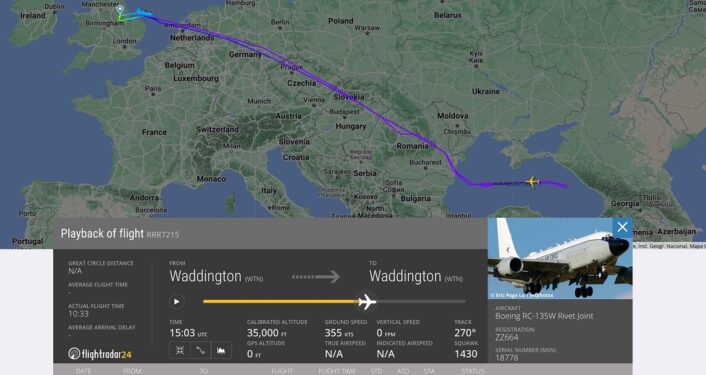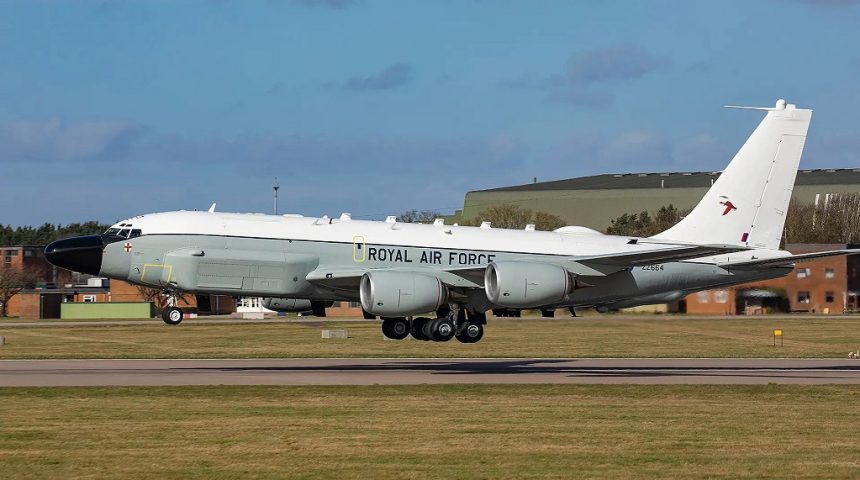Intercepted communications show that one of the Russian pilots shot two missiles at RAF RC-135 after he thought he was ordered to fire, while his wingman yelled at him.
As we reported in detail last year, a Royal Air Force RC-135W had a close encounter with two armed Russian Su-27 Flanker jets while flying a surveillance patrol in international airspace over the Black Sea on Sept. 29, 2022. During the “interaction”, that lasted about 90 minutes, one of the Russian fighters “released a missile in the vicinity of the RAF Rivet Joint beyond visual range”.
In a statement about a month later, UK Defence Secretary Ben Wallace described the incident as a “potentially dangerous engagement” that, however, did not appear to be a “deliberate escalation” but the result of a technical malfunction, agreeing with the Russian depiction of the incident. However, new discording details emerged earlier this year as part of the so-called Pentagon Leaks.
The leaked U.S. military documents, in fact, described the close encounter as much more dangerous than previously reported, referring to the incident as a “near-shoot down of UK RJ,” where “RJ” is a reference to a commonly used nickname for the Rivet Joint spy plane. The documents, whose authenticity has been disputed, disclosed that a Su-27 pilot reportedly misinterpreted a radio message.
New detail emerged in a report by BBC today, somewhat confirming the details of the leaked documents.
In fact, three unnamed senior Western defence sources with knowledge of the incident said that Russian communications intercepted by the RC-135 show that one of the Russian pilots thought he had been given permission to target the British aircraft, following an ambiguous command from a Russian ground station.

According to the sources, the communication received from the ground station controller was to the effect of “you have the target” and interpreted as permission to fire. The Su-27 pilot released an air-to-air missile, which successfully launched but missed its target after failing to lock on to it. The pilot of the second Flanker is said to have begun to swear to other one, thinking they had not been given permission to fire and asking him what he thought he was doing.
The first pilot then released a second missile, something that has never been acknowledged since the incident. According to the BBC’s sources, “the second missile simply fell from the wing, suggesting the weapon either malfunctioned or that the launch was aborted”.
While it did not release details of those communications, the British Ministry of Defence told the BBC: “Our intent has always been to protect the safety of our operations, avoid unnecessary escalation and inform the public and international community.” The spokesperson also added that “this incident is a stark reminder of the potential consequences of Putin’s barbaric invasion of Ukraine”.
Since then, NATO manned and unmanned ISR (Intelligence Surveillance Reconnaissance) platforms have continued to operate in the Black Sea region, but at an increased distance from Crimea. This appears to be related to the presence of a “SECDEF [Secretary of Defense] directed standoff” distance which separates the ISR routes from Crimea, as shown by the Pentagon Leaks. Since the incident, RAF Typhoon FGR4 jets fly escort mission in support of the RC-135s operating in the area.









